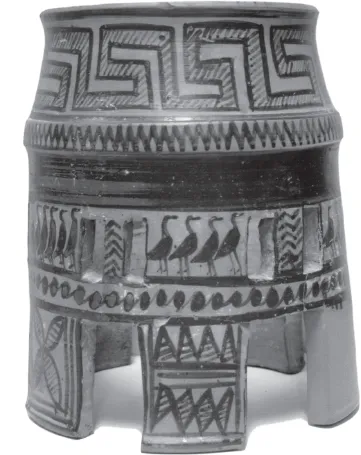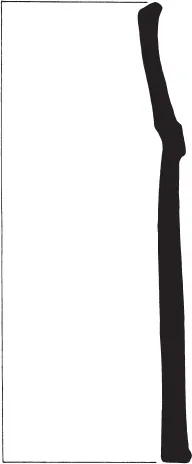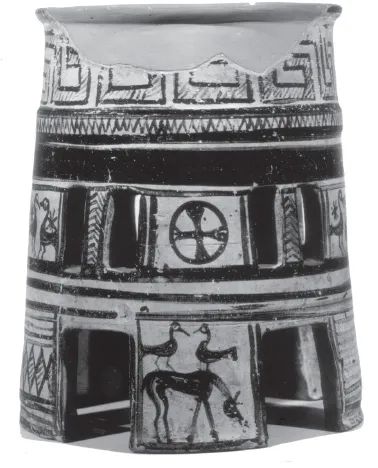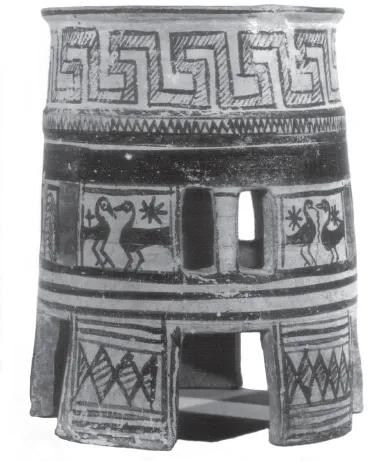
eBook - ePub
Sailing to Classical Greece
Papers on Greek Art, Archaeology and Epigraphy presented to Petros Themelis
Olga Palagia, Hans Rupprecht Goette, Hans Rupprecht Goette
This is a test
Compartir libro
- 120 páginas
- English
- ePUB (apto para móviles)
- Disponible en iOS y Android
eBook - ePub
Sailing to Classical Greece
Papers on Greek Art, Archaeology and Epigraphy presented to Petros Themelis
Olga Palagia, Hans Rupprecht Goette, Hans Rupprecht Goette
Detalles del libro
Vista previa del libro
Índice
Citas
Información del libro
This volume of 15 papers is a tribute to Petros Themelis for his significant contribution to Greek archaeology and especially to the excavation, study and conservation to the ancient site of Messene in the Peloponnese. An international cast of scholars has contributed essays on a wide range of subjects (Greek sculpture, epigraphy and architecture), which reflect the interests of the honorand. New, previously unpublished material from Messenia, Athens and elsewhere is here presented for the first time. The geographical and chronological range of the contributions to this book extends from the Geometric period to the Roman Empire and from Macedonia to Crete and Magna Graecia.
Preguntas frecuentes
¿Cómo cancelo mi suscripción?
¿Cómo descargo los libros?
Por el momento, todos nuestros libros ePub adaptables a dispositivos móviles se pueden descargar a través de la aplicación. La mayor parte de nuestros PDF también se puede descargar y ya estamos trabajando para que el resto también sea descargable. Obtén más información aquí.
¿En qué se diferencian los planes de precios?
Ambos planes te permiten acceder por completo a la biblioteca y a todas las funciones de Perlego. Las únicas diferencias son el precio y el período de suscripción: con el plan anual ahorrarás en torno a un 30 % en comparación con 12 meses de un plan mensual.
¿Qué es Perlego?
Somos un servicio de suscripción de libros de texto en línea que te permite acceder a toda una biblioteca en línea por menos de lo que cuesta un libro al mes. Con más de un millón de libros sobre más de 1000 categorías, ¡tenemos todo lo que necesitas! Obtén más información aquí.
¿Perlego ofrece la función de texto a voz?
Busca el símbolo de lectura en voz alta en tu próximo libro para ver si puedes escucharlo. La herramienta de lectura en voz alta lee el texto en voz alta por ti, resaltando el texto a medida que se lee. Puedes pausarla, acelerarla y ralentizarla. Obtén más información aquí.
¿Es Sailing to Classical Greece un PDF/ePUB en línea?
Sí, puedes acceder a Sailing to Classical Greece de Olga Palagia, Hans Rupprecht Goette, Hans Rupprecht Goette en formato PDF o ePUB, así como a otros libros populares de Storia y Storia dell'antica Grecia. Tenemos más de un millón de libros disponibles en nuestro catálogo para que explores.
Información
Categoría
StoriaCategoría
Storia dell'antica Grecia1. A Melian fenestrated stand in the Nicholson Museum, University of Sydney
Alexander Cambitoglou
The Nicholson Museum of the University of Sydney is in possession of a Greek Late Geometric fenestrated stand whose inventory number is 62.794 (Figs 1.1–1.4).
Colour of the fabric: external surface: light reddish brown; 7.5YR 6/4; external surface misfired area: reddish grey; 7.5 YR 5/2.
Inclusions: black sand, sparse; quartz sand, sparse; white chalk, rare.
Forming and finishing: wheel-made cylinder. The fenestrae and the gaps between the lower parts of the legs were cut into the cylinder.
Painting: dilute glaze is intentionally used before firing for the hatching of the maeander and the tangents in the chain pattern of tangential blobs.
Measurements: height: 22.5 cm; diameter of rim: 15.5 cm; diameter of base: 18 cm.
State of preservation: the stand is preserved in fairly good condition although the lower part of one leg (below the ring with the tangential blobs) is missing and has been replaced by modern plaster. One should also mention that the lower part of the leg, to the left of the missing one, was broken off and has been reattached, and that above it there is a hairline crack that runs the length of the “body” up to the rim of the pot. There are several chips on the rim and there are large areas from which the glaze has flaked off including a considerable part of the abstract and figurative decoration.
The stand, which is Melian, must have been acquired fairly early in the history of the Museum, since it may be one of the many Melian Geometric pots that have been taken away from Melos since the early nineteenth century.
Professor Nicolas Coldstream discusses the Melian school in his well-known book on Geometric pottery1 and points out that most of the pots come from cemeteries on the island of Melos itself and nearby Kimolos. The shape of the Sydney fenestrated stand is characteristic of Melian Geometric pottery and Coldstream has pointed out that the fenestrated stand is the most individual shape of the Melian School.2 The main artist whose pots known to him in 1968 he lists, together with those of his workshop, is the Rottiers Painter, whom he named after Colonel B. E. A. Rottiers, who presented in 1826 two important vases to the Rijkmuseum van Oudheden in Leiden.3
The records of the Nicholson Museum give no information about how or when the stand inv. no. 62.794 was acquired, and an illegible sticker on the base of one of the legs does not help answer these questions.
The stand is subdivided horizontally from top to bottom into three parts: (a) the “neck”, which has a concave profile with a rim at the top and corresponds to the ring or stephane of metal tripod stands; (b) the “body”, which consists of a wide glazed band and the upper part of the legs with the fenestrae between them and corresponds to the portion of metal tripod stands between their ring above and their inner ring and inner struts below and (c) the lower parts of the legs or legs proper, which correspond to Catling's “plain legs”.4 The neck is decorated with an orthodox hatched maeander with the hatches painted with diluted glaze.5 Between the neck and the “body” is a torus decorated with a zigzag line.6

Figure 1.1. Melian Geometric stand. Sydney, Nicholson Museum 62.794. Photo: Michael Turner.

Figure 1.2. Melian Geometric stand. Sydney, Nicholson Museum 62.794. Photo: Michael Turner.
The upper parts of the legs form five decorated panels alternating with five couples of fenestrae. Each panel is decorated with six, five or four solidly painted birds looking to the right. They all have back toes indicated by short strokes obliquely attached to the bottom of their feet (Figs. 1.1, 1.2, 1.4). The upper parts of the legs and the fenestrae are separated from the lower parts, or legs proper, by a short ring decorated with a chain of slightly elongated tangential blobs.7 The fenestrae are separated from each other by means of narrow “pillars” that form vertical oblong panels decorated with stacked multiple zigzags or horizontal chevrons.8
The panels of the four lower parts of the legs, or the legs proper, that are preserved are decorated as follows: one has a ladder with nine rungs framed by three vertical thick lines on either side and two thick horizontal lines at the bottom;9 the second has a hatched quatrefoil;10 the third (Fig. 1.1) is divided into two registers: the upper register has four hatched triangles11 and the lower has a horizontal chain of four hatched lozenges;12 the fourth (Figs 1.2 and 1.4) has a sunburst with two crossed spokes inside it, dots in the interstices, a vertical wavy and four straight thick lines on either side13 and four horizontal lines underneath.14 Only the top of the decoration of the missing leg survives. The central motif, only a small part of which is preserved at the top, cannot be identified or reconstructed. It is framed by four vertical lines on either side, only the upper parts of which are preserved.

Figure 1.3. Melian Geometric stand. Scale 1:2. Sydney, Nicholson Museum 62.794. Drawing: Rowan Conroy.

Figure 1.4. Melian Geometric stand. Detail scale 1:2. Sydney, Nicholson Museum 62.794. Drawing: Rowan Conroy.
As already mentioned, the shape of the Sydney fenestrated stand is characteristic of Melian Geometric pottery,15 and Coldstream suggested that the broad neck and tall and wide legs that most Melian stands have are due to the influence of Attic tripod stands like Athens, Kerameikos Museum 340.16
In my description of the Sydney stand, which subdivided the pot into three parts, I bore in mind not only the profile which emphasizes the neck and the legs but also its decoration and a similar subdivision is I think also appropriate for stands like British Museum 65.7–26.1, Paris A490 and Berlin F52 (Figs 1.5–1.6)17 that have a broad band between the neck and the upper parts of the legs. Although this subdivision is up to a certain point arbitrary, there is no doubt that in the stands mentioned above only the lower parts of the legs seem to function as such, while the upper parts together with the broad band above and the ring below them seems to have become a part of the “body”. The separation of the upper and lower parts of the legs is very pronounced in the stand Amsterdam 1230,18 where the lower parts – the legs proper – have been shortened considerably and have lost their decorative relationship with the corresponding parts above them. Very interesting in this respect is also the stand British Museum 37.10–18.2 (Fig. 1.7)19 in which the lower parts of the legs with their decorative panels have been completely omitted, the ring has moved upward and the body and legs have been amalgamated.20

Figure 1.5. Melian Geometrie stand. Berlin, Staatliche Museen F52. Photo: Jutta Tietz-Glagow.

Figure 1.6. Melian Geometrie stand. Berlin, Staatliche Museen F52. Photo: Jutta Tietz-Glagow.
Since, however, most earlier Attic stands like Kerameikos 416, 931 and 249,21 and, indirectly, most Melian stands that follow them seem to imitate bronze tripod stands of a type made in Cyprus and Crete or in the Cretan tradition,22 we have to assume that pieces like Amsterdam 1230 (Coldstream no. 13) and British Museum 37.10–18.2 (Fig. 1.7; Coldstream no. 2) have distanced themselves from the bronze prototypes considerably.23 This distancing is also clear although to a lesser extent in the Sydney stand, Paris A490 (Coldstream no. 16) and Berlin F52 (Figs 1.5–1.6; Coldstream n...